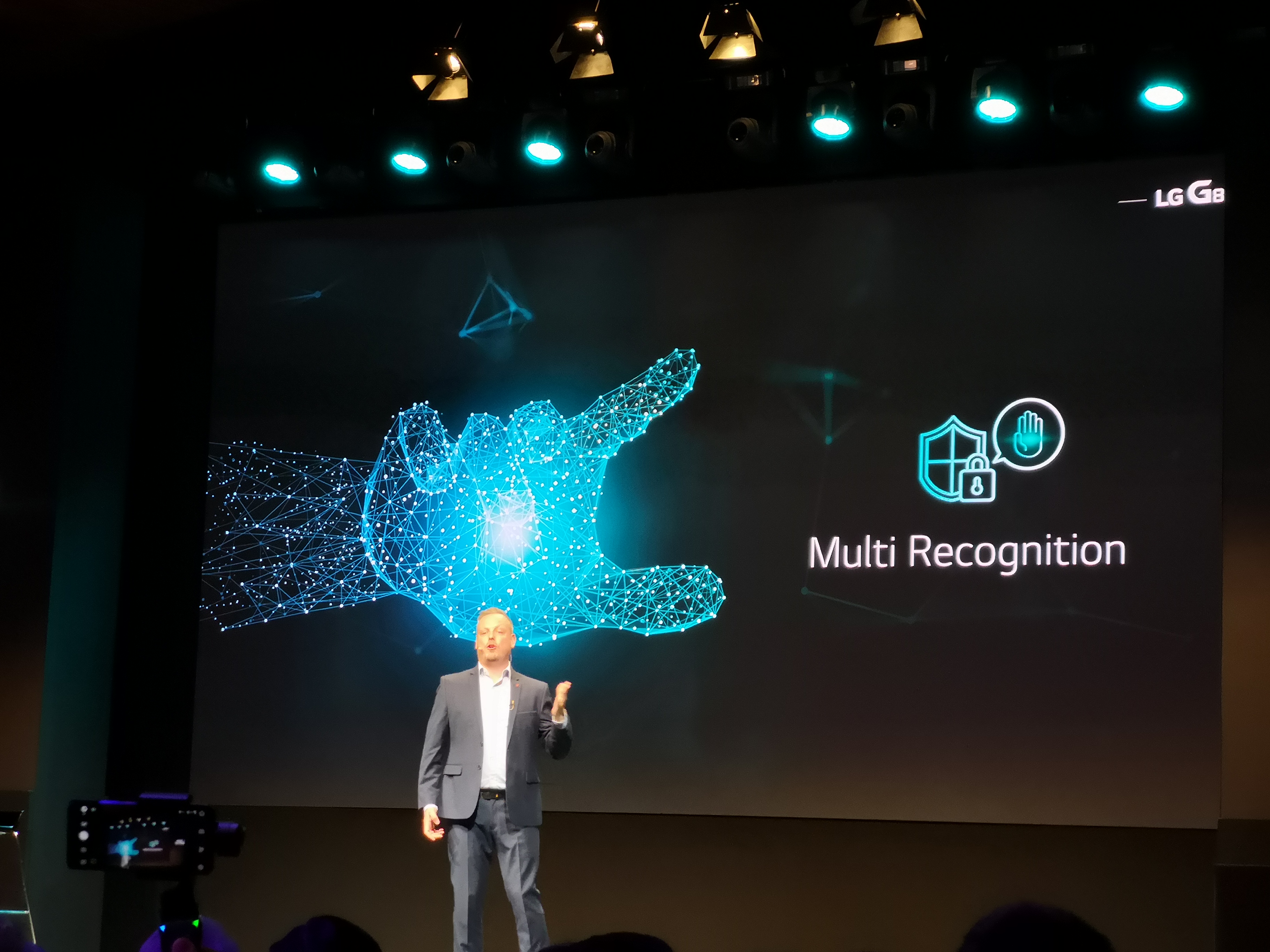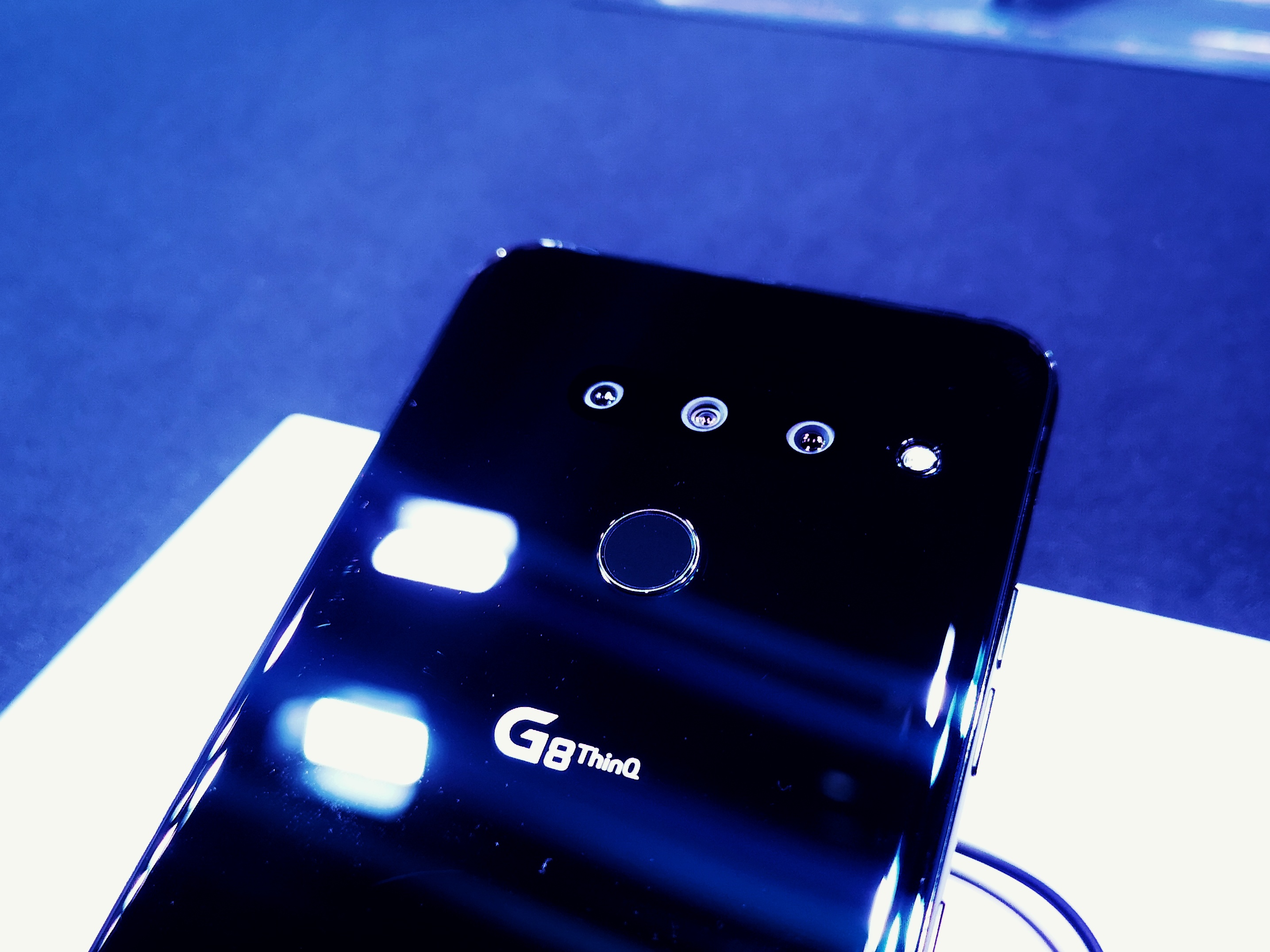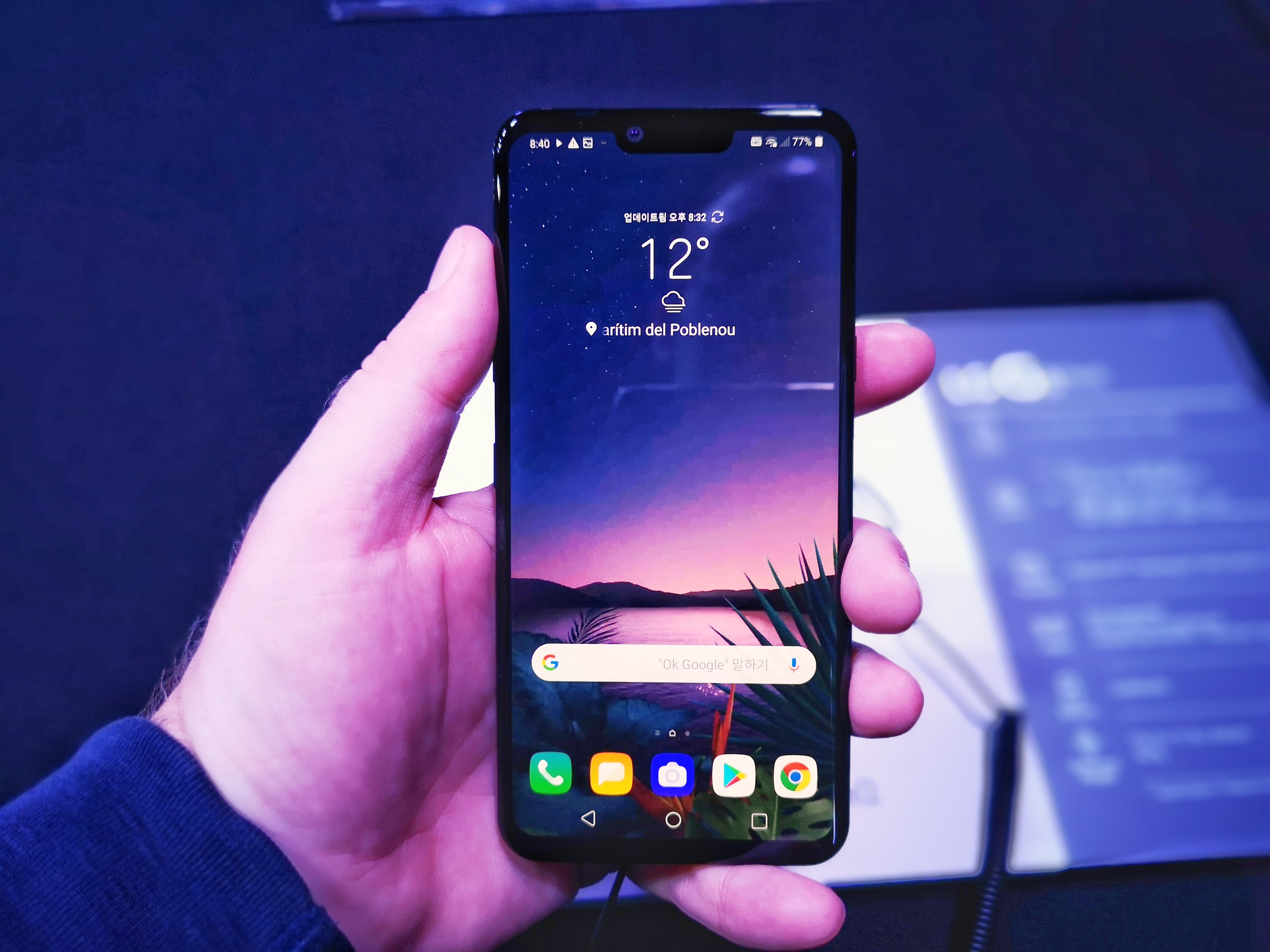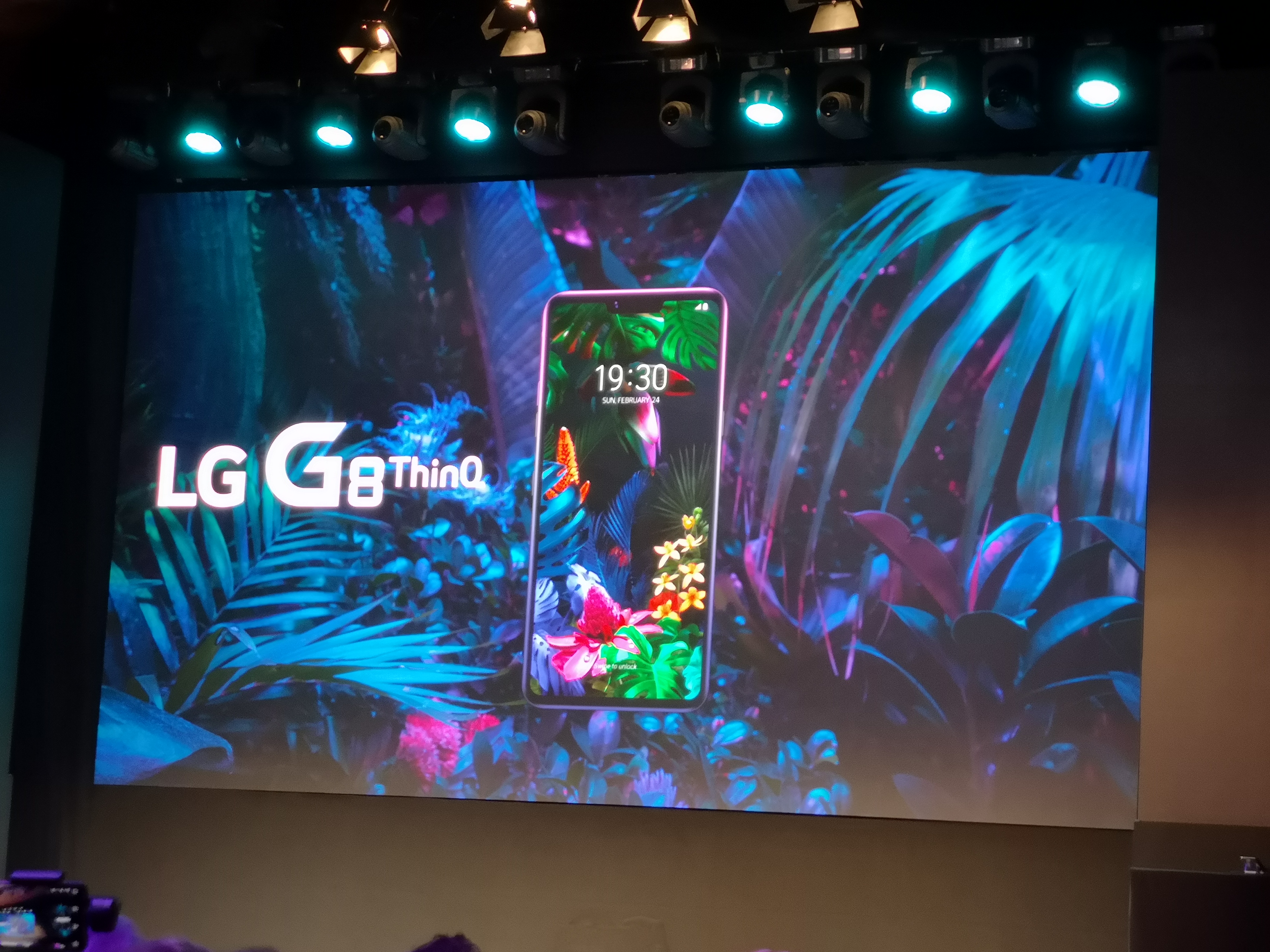LG’s pre-MWC press conference has just concluded, unleashing their new G8 ThinQ smartphone on the world.
While the G8 (we’re not adding ThinQ to every reference, okay?) looks like a pretty standard smartphone, it’s hiding the bearing heart of experimentation within when it comes to new smartphone features.
Front-facing TOF
Hidden away within the notch in the full-screen front is a second front-facing camera, and it’s a bit special – it’s a Time of Flight (TOF) sensor, which – as we saw on the Oppo R17 Pro – is all about measuring light and distance. Unlike Oppo though, LG’s chosen to place its TOF sensor on the front of the phone and called it the Z Camera (because of its 3D depth sensing capabilities). It’s facing the user and observing their actions.

Placing TOF on the front means that the G8 is able to see its user in 3D space and allows some pretty wild new interactions – the most basic of which is a form of gesture control that LG’s calling Air Motion. You can use gestures to launch particular apps, turn a virtual knob to adjust the G8’s volume output, take screenshots and more.
The TOF sensor also has applications in biometric security, as it’s able to perform vein detection in your hand as it approaches the device – Hand ID. As icky as vein detection sounds, it’s actually pretty useful in securing your phone – LG says only 1 in 1 billion people will have the same vein pattern as you. It can apply the same capabilities to face unlock as well.

Adding the TOF sensor in the notch area of the G8 is pretty smart, as it solves the problem of unlocking your phone while it’s sitting flat on your desk without a front-mounted fingerprint sensor encroaching on the other end of the screen, and you don’t have to pick the phone up for face recognition.
Triple Rear Camera
While LG was all about the TOF, the G8 is also sporting a pretty neat triple rear camera array with a now-familiar Standard (F1.5 / 1.4μm / 78˚), Telephoto (F2.4 / 1.0μm / 45˚) and Super-wide (F1.9 / 1.0μm / 107˚) arrangement.
This setup sounds a little samey now (LG’s used similar for while now), but it’s worked to great effect in the Huawei Mate 20 and also been recently adopted by Samsung – with the addition of smart camera features like Night Mode, Video Portrait the G8 could be a photographic powerhouse.

Otherwise, the G8 holds few surprises after the torrent of leaks of recent weeks and months.
The screen is a 6.1-inch OLED FullVision (notched) display running at QHD+ resolution. LG’s historically had (and supplied to others) some of the best screens in the industry, and the G8 is unlikely to disappoint on this front.
LG’s packed one more surprise into the screen though – and by surprise, I mean something they pre-announced a few weeks ago, but roll with it please – the screen functions as the phone’s main speaker driver. LG’s Boombox technology also makes a comeback.
Finally on the screen, it doesn’t have one of the new fancy built-in fingerprint readers (the G8 still uses a more standard rear-mounted sensor) — you can be sure LG wants you to use Hand ID.
Internally the phone is powered by a bang up-to-date Snapdragon 855 processor paired up with 6GB of RAM and 128GB storage. MicroSD expansion up to 2TB is supported.
There’s a 3,500 mAh battery, USB C charging but it seems LG still isn’t a believer in wireless charging.
Also notable? Complete lack of camera bump – the back of the phone is nice and flat. It’s also rendered in one of three colours – Carmine Red, New Aurora Black or New Moroccan Blue.

LG signalled tonight that they’re tailoring the G8 to different markets (which is difficult not to read as “carrier requirements”) with some differences in configurations and even the rear triple camera (on some models it’ll be a dual camera).
Interestingly, LG’s press materials also signalled that the G8 will see a slightly different G8s variant, featuring a 6.2-inch screen and slightly lower specced cameras.
We’ve yet to receive confirmation on the specs for an Australian release – which also means no pricing information yet – but we’ll definitely let you know when that information becomes available.





I think the in-screen speaker is the most exciting part to me; I’m a big champion of front-facing speakers in general, and while stereo is idea, with this push for all-screen, I guess the best alternative is this G8 option. Would be interesting to see/hear in person.